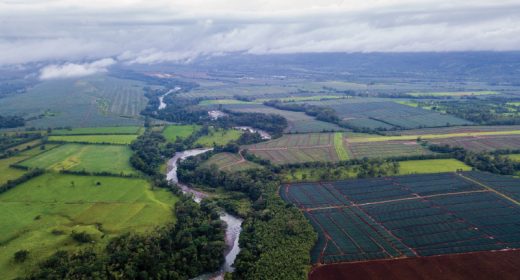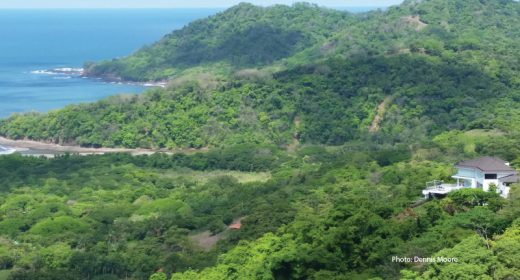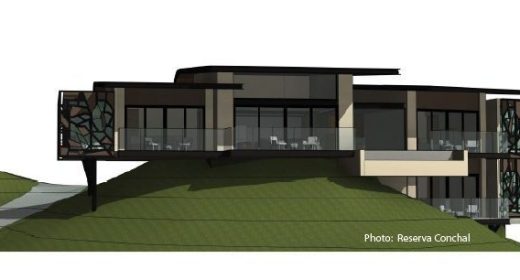
CST: Being Green Matters for Diamante Eco Adventure Park
- JUN 30, 2018Warning: count(): Parameter must be an array or an object that implements Countable in /home/howlermag/public_html/old/wp-content/themes/new-paper/includes/general.php on line 193
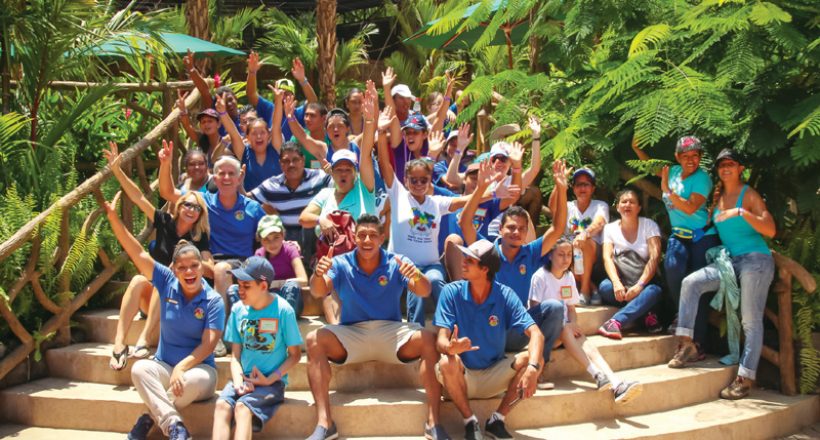
Your Lead Paragrpah goes here
Being Green Matters for Diamante Eco Adventure Park: We came to Diamante Eco Adventure Park on a somewhat unusual mission: to learn about Diamante’s efforts to be recognized by the Certification for Sustainable Tourism (CST). This program, launched by the Costa Rican Tourism Board, evaluates businesses for their environmental, social and cultural sustainability practices, awarding up to five leaves for those that meet 95% of its exhaustive criteria.
In our tour, I noticed the gorgeous jaguar, Nico, was awake and walking along an upper branch in his habitat when he spotted a small, green lizard cluelessly walking toward him on the same limb. Nico froze and ducked his head in a hunting pose, and I thought, we’re going to see a live kill right here, right now, at Diamante Eco Adventure Park.
But the little lizard kept sauntering boldly forward until it was invading the big cat’s space, at which point the jaguar jumped out of its way in fright, like a spooked little kitten.
Guanacaste’s leading adventure park
sees CST certification as a key component
of its environmental mission.
A jaguar scared of a lizard was one of the more unlikely surprises we found at Diamante, a world-class adventure park with a great animal sanctuary at Playa Matapalo, south of Playas del Coco. Diamante has a major ziplining operation, including a dual, ocean-view Superman cable that is almost a mile long. Diamante also offers ATV rentals, horseback riding, ocean activities and the amazing animal park, built in a partnership with La Paz Waterfall Gardens.

In our efforts of understanding Diamante’s efforts to be recognized by the Certification for Sustainable Tourism (CST), we toured Diamante’s facilities and spoke to its ownership and staff.
“It required us to complete an intensive self-audit,” said co-owner Jim Correll. “It’s one thing to use the word ‘eco’, it’s another thing to practice it daily. The CST process helped us fine-tune our daily eco-related operations.”
Alexandra Guzmán, Diamante’s marketing assistant, explained the requirements in some detail. The Certification for Sustainable Tourism certifies hotels, restaurants and other enterprises, but it has a category for adventure parks with four major issues that must be addressed.
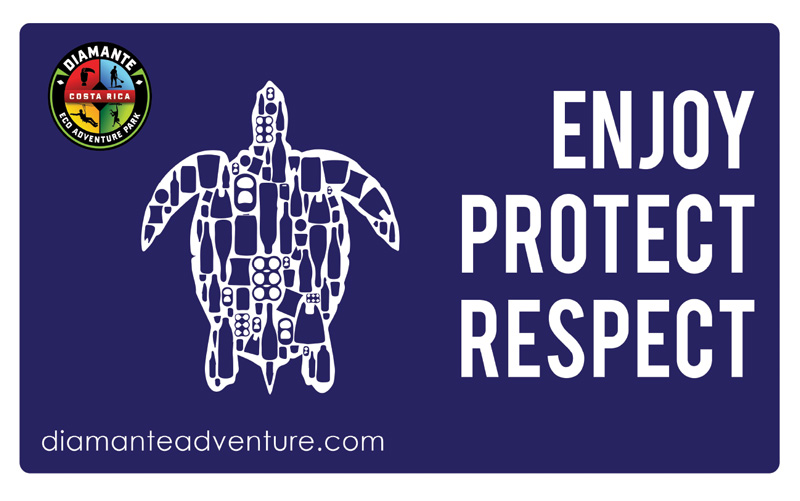 The first is the physical and biological environment.
The first is the physical and biological environment.
“This is the environment you create within your company,” she said. “It’s basically how the business is done and run, so it looks like you have a solid company. It looks like you have a vision, a mission, that you have your statements, that you have a culture within your business, you have your values.”
I noted that none of this has anything do with the environment.
“Sustainable tourism is not only about the environment,” she said. “It’s about being able to have a business that you grow, and as you grow it, you’re helping the community as well.
“It has to do with business, it has to do with the environment, it has to do with culture, it has to do with who you hire, the opportunities you create. It looks for reducing the negative impact that you might have.”
More Diamante Articles
The Full Diamante
Costa Rica Animal Sanctuaries
Costa Rica Combo Adventure Parks
The second major category is operations.
“That’s how your operation is run,” Alexandra said. “Whether you have policies in place about how you should treat your customer, what your conduct is going to be like, how are you going to educate the customer in what you’re doing here, and how you’re trying to help the environment, help the community and help the culture.”
Alexandra said this category is also focused on the environment, on what you do to reduce, reuse and recycle.
“Our single-use items are almost nil,” she said. “All of our buffet is done with reusable plates, cloth napkins, no plastic glasses.” (There are no plastic straws either, Jim noted.)
“We have trash cans in every station all around the park, divided between organic, trash, cans, glass and plastic,” Alexandra said.
“We have the treatment plant as well, so all the bathroom waters are treated and then they’re used for gardening.”
The third category is about the customer: “They want the guests that come in to take something out of it, to have a real Costa Rican experience and have it all very balanced,” Alexandra said.
“It’s all about what are you doing to educate your client, how are you giving them something to take away, and how are you also insuring that they know the laws of Costa Rica,” she said.
“And it’s also about how are you getting them involved in maintaining a greener planet.”
The fourth category is socioeconomic: “What are you doing to help the communities around you?”
For example, Diamante has over 90 employees, of whom almost all are locals, and Diamante does not lay them off in the low season when business is slow.
“It’s a great thing to create jobs,” said Jim, originally from San Diego. “Providing year-round employment and opportunity for the local community has been an extremely rewarding aspect of building Diamante.”
Alexandra said that Diamante also organizes beach and town cleanups, holds community events like Guanacaste Day, and sponsors low-resource schools to come visit.
Other HOWLER Eco-Sustainable Articles
Ecotourism in Costa Rica: Sustainable Tourism
Ecotourism Pioneer: Rafael Gallo – Ríos Tropicales
Caminos de Osa: Costa Rica Tourism that Helps Costa Ricans
There’s one group of kids from the Center for Special Learning in Liberia that comes every year to do the ziplining and see the animals. Alexandra said it’s very rewarding to see these kids having so much fun.
Alexandra went on to outline the CST’s extensive verification process, which requires the business not only to comply with a vast checklist of best practices but to prove they’re complying — and to do so year after year.
I asked Jim why Diamante is going to so much trouble to get a certificate with some leaves to hang on the wall.
“The CST is an important recognition for everybody in the business,” he said. “But we did it before we knew what the Certification for Sustainable Tourism was.
“Our early mission, because we had an oceanfront property, was to have minimal impact on the land, and create a special product for people to experience the best of Costa Rica. At the heart of that, we wanted to be very environmentally aware.”
Jim said when you see those leaves on the wall, “you know the company has earned it.” He said it’s not like you fill out an online application and they mail you the certification.
“We wanted to have that validation. We knew going into the process, it would be a big effort for our team. I am very proud of everybody. They all have worked very hard, putting in extra hours to make this happen,” he said.“ I look at it as an important self-auditing process to hold the company accountable.”






